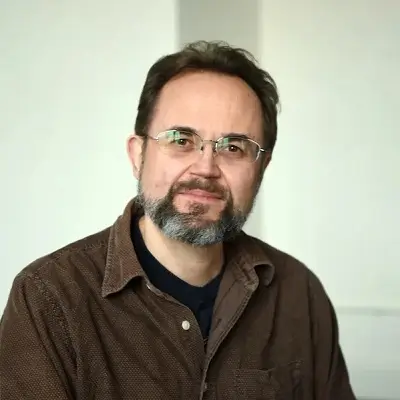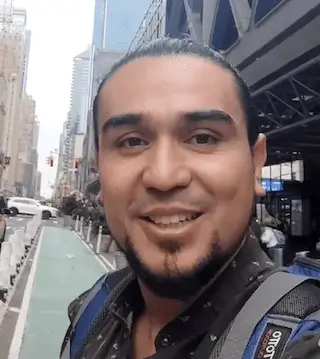
We caught up with Edwin, a student in the Intensive English Program, to discuss both his work and his experience at ILI. Edwin was with us for six months. During that time, he exhibited at the Colombian Consulate in New York; the show was titled Lights * Shadows on the Path to Reparation: The Experience of Forced Migration on Colombians in the United States. He also traveled to California to lead a Photovoice workshop with immigrants and afro-Americans in Oakland. We learned so much from Edwin and look forward to working with him both virtually (he returned to Bogota this week) and in person when he returns to the U.S.
Please tell us a bit about your background and what brought you to study at ILI
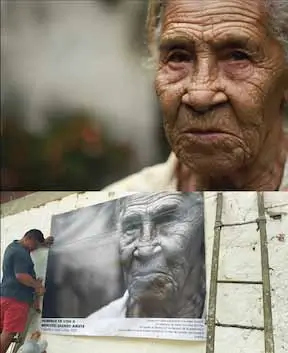
I’m a photographer, social worker, and human rights defender in Colombia. Due to my investigative and creative work, I need to travel constantly inside and outside my country, which has meant a permanent need to communicate my ideas in languages other than Spanish in different academic, artistic, and community settings.
During the summer of 2022, we started a participatory photography project with UMass to portray the experiences of Colombian refugees in the United States. I decided to have an immersive experience with the Anglo language and culture, so I decided to live in Massachusetts and study at ILI on the recommendation of professors and UMass graduates.
What is your mission as a photographer and what kind of photography work interests you?
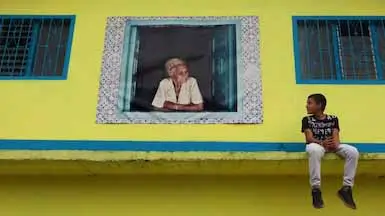
I believe that photography contributes to building memories of our most significant experiences and enhances the power of social and personal representation, namely, a creative possibility of expressing our points of view about the world and thereby contributing to its transformation. Photography helps people to see their reality in a different way and that is a very important step to start changing it. As Cartier-Bresson said, “I am not interested in photography but in the life behind it.”
We’re surrounded by images but we only care about those that mean something to us, so we only keep those photos that interest us and have a special meaning. To represent is to give meaning to images again and this is what I like the most about taking photos, because we make the everyday extraordinary. That’s magical. Susan Sontag once said that “Photographs alter and expand our notions of what is worth looking at and what we have a right to observe.” And I really believe in that idea; photography is to highlight the human experience.
How does your work and experience in social work and activism intersect with your photography work?

This power of the image led me to combine my community work and advocacy with victims of the armed conflict with photography. Allowing communities to tell their stories in the first person gives their stories a testimonial character and this is an important contribution to the historical memory of a country that is in the process of healing its wounds and overcoming the scourge of violence. My job consists of providing representation tools and making the memories of the victims public to generate broader social dialogues in which as many sectors as possible are linked: academia, state, companies, social organizations, cultural institutions. I deeply believe that this is a contribution to peace in my country and I work to make it possible.
You recently premiered a show in New York City. Can you tell us more about that?
The Photo-Diasporas project, housed in the Center for Justice, Law and Societies (CJLS) at the University of Massachusetts, Amherst, with resources from Humanity United, seeks to broaden our understanding of the violence in Colombia, which is the longest armed conflict in the Americas. It does so through the eyes and voices of those who were forced to leave the country and start a new life in the United States, one of the largest receiving countries for Colombian migrants.
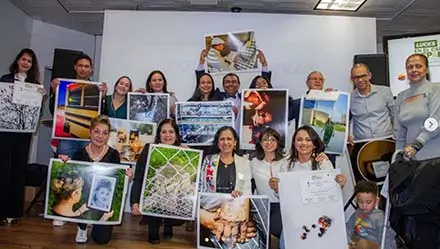
The Photo-Diasporas arose as an alternative to promote connections between those who suffered violence in Colombia and today live abroad, as well as to facilitate their public expression and to deepen our understanding of the impacts of the armed conflict beyond the borders of Colombia. The project is based on the use of photo-voice, an action-research method that uses photographic and narrative composition as a form of community research and expression.
During thirteen weeks, a group of fifteen victims of the Colombian conflict connected virtually from different locations in California, Texas, Florida, Chicago, New York and New Jersey to learn about photography and share their experiences. During those weeks, they experimented with new ways of exploring the outer and inner world through the photographic lens, shared photos from their personal archives, and finally moved forward with their photo-voice projects. The result is a web page that includes 87 photographs accompanied by the story and voice of each participant, and a physical exhibition of 25 photographs at the Consulate General of Colombia in New York City.
You can see all the contents in the following link: https://www.fotodiasporas.org/en
I know that some of your work is focused on community. What are some similarities and differences regarding the idea of community that you have experienced throughout your travels and experiences?
The concept of community is based on what makes us common, what identifies us as part of a group. This can be due to a territory, a social belonging or a certain culture. I believe that community work can be a source of emancipation and social justice if we promote democratic values and the construction of peace within them.
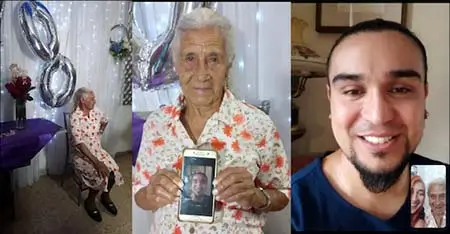
Strengthening organized and community processes amplifies the social capacity to build peace and non-violence scenarios in the territories. Artistic practices are a key piece in this process because they contribute to the creation of symbols that can distort the violence and stereotypes that sustain segregation and social discrimination.
In my way, I have tried to have this as my ethical and professional horizon. Some communities that have taught me are: displaced Colombian boys and girls who do photographic exchanges with refugee peers in Germany, young migrants, Afro-Americans and Asians in Oakland, CA, who tell their stories about safety and well-being. Peasant communities in northern Colombia that claim the value of land and countryside, indigenous communities in resistance in southern Colombia that defend their right to territorial autonomy and food sovereignty, or the diaspora of Colombian social leaders in the United States of which I spoke above.
How has your experience at ILI and learning a language impacted you?
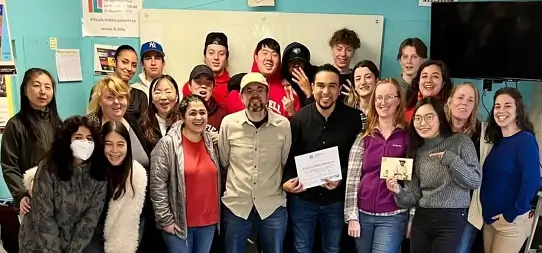
ILI is a place with open doors where you not only learn a language but where you can make friends from all over the world. On the one hand, I fully share this social justice perspective and this human and community vision. I had a very intense immersive experience that made my learning go faster. During these 6 months, I understood that no class is the same as the other, they have many useful tools and many learning methodologies. On the other hand, the alliances or pathways they have with universities are very useful for linking with study programs. I was surprised by the high level of teachers and their willingness to permanently accompany our learning process.
What’s next for you?
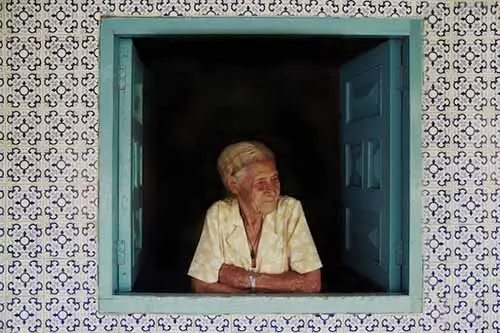
In 2023, I will start working on a Photovoice Project with Colombian peasants in rural areas where the peace process is being implemented. We will produce a large photographic exhibition on everyday peace in Colombia that we hope will travel to many places. I would like to return to Massachusetts soon to study in a PHD program.
Where can people find support for your work or learn more about you?
Websites:
Instagram: @vagabundodeltiempo
Email: eacubillosr@gmail.com
Interview by Cait Simpson, ILI former Social Media Manager
